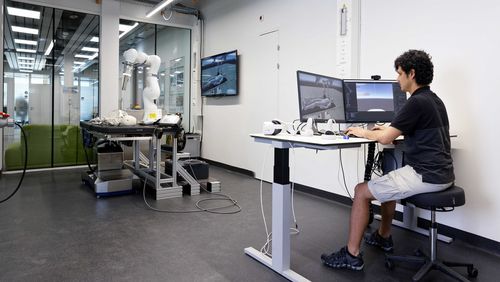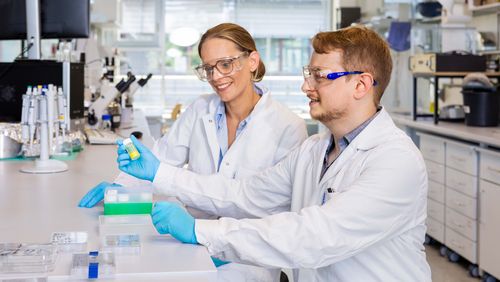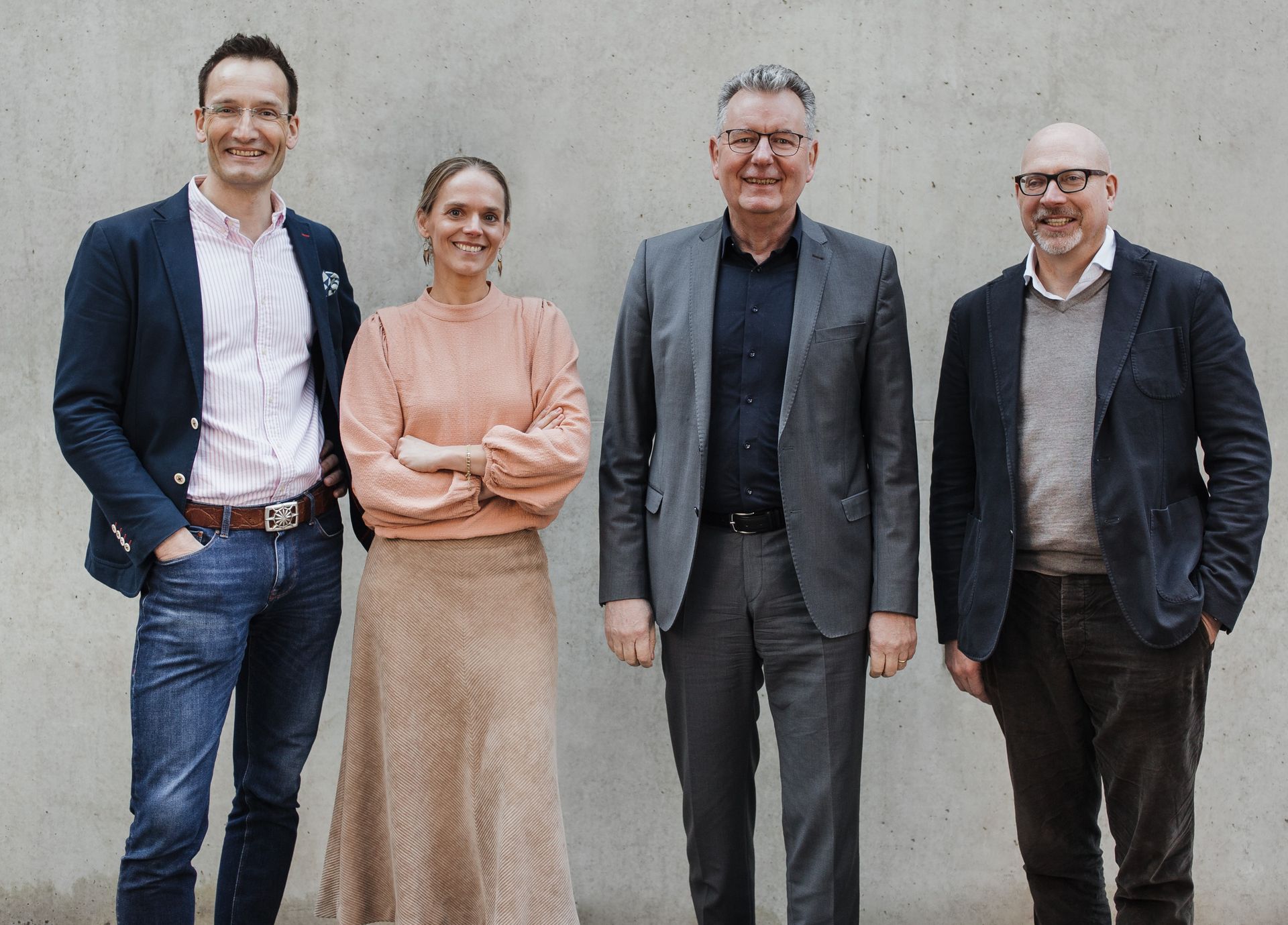
Bio-ink to replace damaged cartilage
The researchers in the TriggerINK project at DWI – Leibniz Institute for Interactive Materials in Aachen have an ambitious goal: enabling the regeneration of cartilage on a damaged joint. The core feature of the project is a 4-D printed scaffold made of a novel material – bio-ink. The Werner Siemens Foundation is supporting the innovative methodology with a five-year grant.
Joint pain is one of the most common health issues of our time, with cartilage loss (osteoarthritis) or a damaged meniscus in the knee numbering among the most frequent complaints. Cartilage and the menisci have important functions: they absorb shock and distribute the pressure exerted on the knee when we move. In addition, they supply our bones with nutrients and enable bones in a joint to move quickly and smoothly, with minimal friction. However, worn or damaged cartilage tissue can’t regrow on its own. And although modern medicine has developed therapies such as cartilage transplantations and substances that promote tissue regeneration, these procedures frequently cause massive damage to healthy tissue. In addition, there’s no guarantee of success.
Enhanced 3D printing
This could now change, thanks to the TriggerINK project, which starting in 2022, the Werner Siemens Foundation is supporting with a 10-million-euro grant distributed over five years. The interdisciplinary research team at DWI – Leibniz Institute for Interactive Materials in Aachen have designed a visionary method to promote cartilage regeneration. The innovative principle behind TriggerINK is 4D printing, which builds on existing 3D printing technology that prints out a material, layer by layer, to form a three-dimensional structure. Time is the fourth dimension in 4D printing, meaning the 3D structure is designed in such a way that an external trigger – heat, vibration or sound, for example – can move or alter the structure’s form after printing.
Multi-disciplinary expertise
The project is led by Laura De Laporte, member of the scientific board at DWI – Leibniz Institute for Interactive Materials in Aachen and professor of advanced materials and biomedicine at RWTH Aachen University. TriggerINK is a prime example of collaborative modern research that relies on integrating specialist knowledge from various disciplines. In addition to De Laporte, who contributes expertise in the development of biomedical materials, the project includes three other leading scientists: Stefan Hecht (3D printing using light), Andreas Herrmann (ultrasound-induced release of active agents) and Matthias Wessling (technical implementation of the method). “That we’re able to unite this diverse knowledge here in Aachen is unique and, at the same time, also a strength for the project,” Laura De Laporte says. A team of external medical and cell biology specialists work in the project in an advisory capacity.
High-precision control of tissue growth
- The researchers are planning to realise their project by printing a 4D structure directly into a wound or an affected joint. The targeted treatment and healing process comprises the following six steps:
- A thin layer of polymer is sprayed onto the existing, sterilised cartilage to ensure good adhesion and enable the body’s own cartilage tissue to grow into the newly applied structure from the 3D-printer.
- The 3D printer prints the bio-ink directly into the wound, layer by layer. The bio-ink is made up of biodegradable hydrogel, a gelatinous substance. During printing, the layers are repeatedly irradiated with light, thus altering the chemical structure of the bio-ink and reinforcing the bond between the individual printed layers. A porous scaffold is gradually built up, and the cartilage tissue can regrow within this structure.
- The bio-ink is made up of various materials, including tiny gel sticks containing magnetic particles. When the scaffold is being printed, a weak external magnetic field is activated to align these particles. This procedure ensures that the microstructure conducting the cell growth is set in a specific pattern, allowing the body’s own tissue to regrow in the correct direction.
- Growth factors and nutrients are some of the other components in the bio-ink. If necessary – as is the case in larger wounds – ultrasound impulses release these substances into the scaffold, where they stimulate the growth of cartilage tissue.
- To speed up healing after a medical intervention, it’s important that joints and tissues are mobilised as soon as possible. Here, too, the TriggerINK technology works with external impulses: at the right moment, light and heat impulses are emitted to set the growing cartilage into slight motion – a method the researchers have dubbed an “in-vivo gym”.
- Lastly, once the body’s own cartilage has regenerated, the bio-ink scaffold breaks down on its own. The decomposition process can also be accelerated using external impulses.
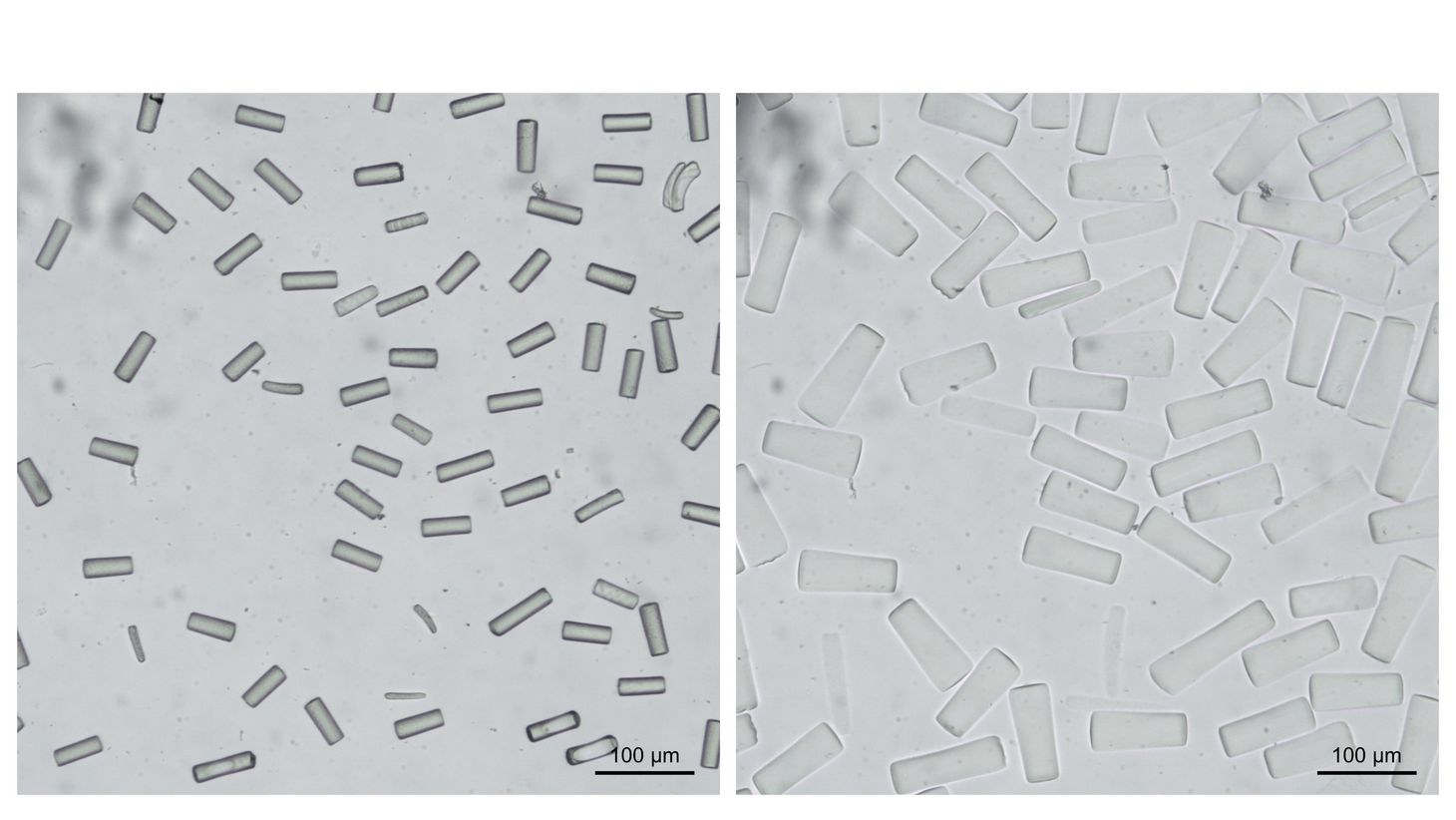
Potential application in other therapies
If the novel and innovative principle proves successful, it could revolutionise cartilage replacement therapy – because no present-day procedure is capable of precisely reconstructing cartilage or a meniscus. “In addition to the other benefits, printing the scaffold directly into the joint would be a minimally invasive procedure,” Stefan Hecht explains. “It will no longer be necessary to cut anything out.” And perhaps more importantly: the new technology has the potential to be applied in therapies other than joint pain. “Cartilage is a relatively simple tissue. That’s why we decided to focus on it in the project,” says Matthias Wessling. But the approach could also be further developed to help repair other kinds of damaged tissue. Examples include the cornea, tendons, intervertebral discs, muscles and nerves.
Complex bio-ink
The researchers in Aachen are aware that the project is extremely ambitious and that there are numerous obstacles to overcome. According to Andreas Herrmann, one of the biggest challenges is manufacturing the bio-ink itself. Its various components are interdependent and in constant interaction – the finished product will function only as a whole. This means the team won’t be able to develop the bio-ink in a step-by-step procedure, as Herrmann explains: “We need to combine many different materials into one and the same substance. That’s why one of our key objectives right now is ensuring their compatibility.” Developing each single component in tandem with the others and then adding it to the bio-ink is a novelty in itself. But the greatest difficulty will be ensuring that each component can perform its individual function while simultaneously interacting with the others.
A new lab
The project’s agile organisational structure is designed to accelerate the research, and the team hope to conduct animal experiments as early as 2024. And later this year, DWI – Leibniz Institute for Interactive Materials and RWTH Aachen University are planning to open a joint lab – first in Translation (fiT) – equipped with clean rooms measuring a total of 425 square metres. Laura De Laporte says the lab will help close the gap between preclinical and clinical research: “In order to make the bio-ink ready for practical application, at some stage it will have to be produced on a larger scale and our method will need to be tested in the clinic.” Throughout the project, the team are pursuing a clear goal: helping the millions of people who suffer from joint pain.
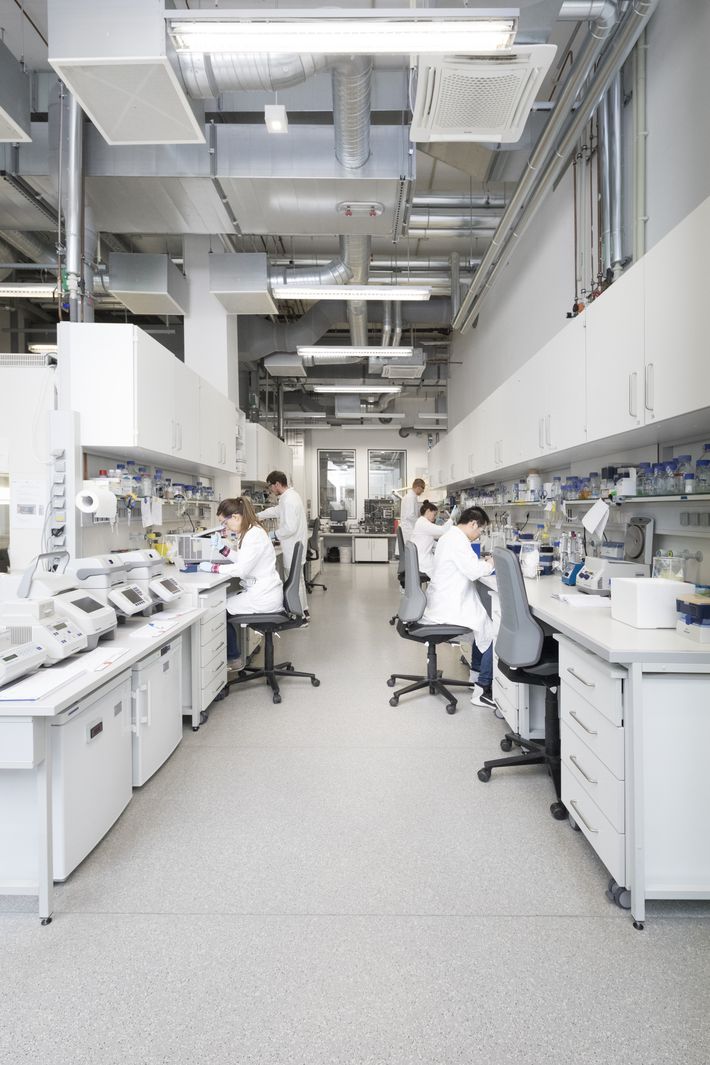
Facts and figures
Funding from the Werner Siemens Foundation
10 million euros over 5 years
Project duration
2022 to 2026
Project leaders
Prof. Dr Laura De Laporte, member of the scientific board at DWI – Leibniz Institute for Interactive Materials in Aachen and professor of advanced materials and biomedicine at RWTH Aachen University
Professor Stefan Hecht, Ph.D., scientific director of DWI – Leibniz Institute for Interactive Materials and professor of macromolecular chemistry at RWTH Aachen University
Prof. Dr Andreas Herrmann, deputy scientific director of DWI – Leibniz Institute for Interactive Materials and professor of macromolecular materials and systems at RWTH Aachen University
Prof. Dr-Ing. Matthias Wessling, member of the scientific board at DWI – Leibniz Institute for Interactive Materials in Aachen and professor of advanced materials and biomedicine at RWTH Aachen University
Project partners and advisers
Professor Rebekka Schneider-Kramann MD, Dr. rer. nat., professor at the Institute for Biomedical Engineering at RWTH Aachen University and the Universitätsklinikum Aachen
Professor Fabian Kiessling MD, professor of experimental medical imaging at RWTH Aachen University and the Universitätsklinikum Aachen
Prof. Dr Frank Luyten, professor of rheumatology, department of musculoskeletal sciences at the Leuven university hospital
